6. Jack Black – King Kong (2005)
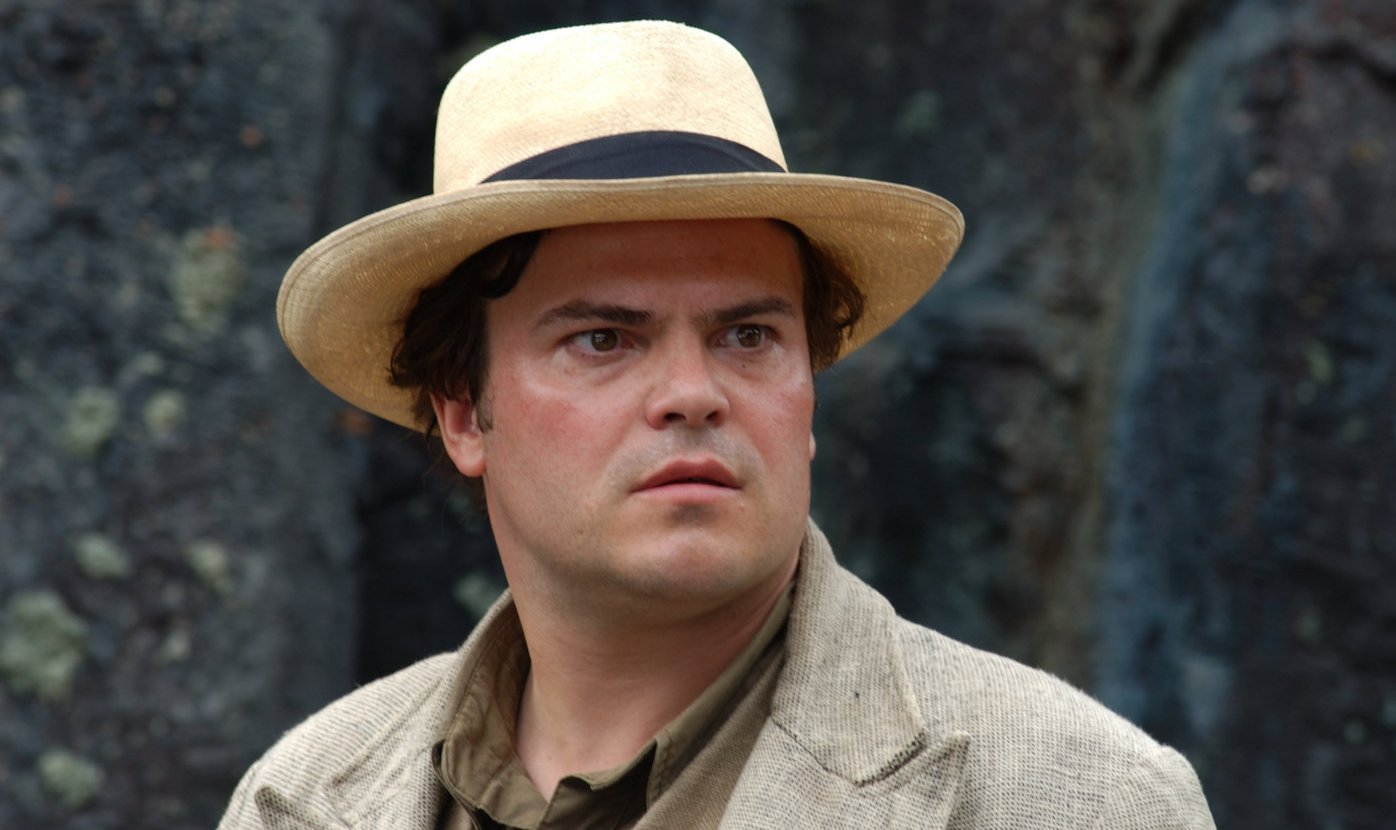
The discussion on whether King Kong should have been remade in the first place aside, 2005’s King Kong made earnest attempts at giving a new perspective to a landmark in cinema history.
Fresh from Shark Tale and School of Rock (to name a few – he’s prolific), Jack Black is Carl Denham – a bumbling con-man who is eventually revealed as the movie’s penultimate, completely unthreatening villain. He has with him Preston (Colin Hanks), Denham’s hapless and neurotic assistant.
Unfortunately, Jack Black is a man very difficult to separate from the fact he’s Jack Black. Performing opposite Naomi Watts, perfectly cast to stand in Faye Raye’s formidable shoes as Ann Darrow, and a convincingly gawky Adrien Brody (playing Jack Driscoll), Jack Black mugs his way through as best he can. He seems to be unsure as to who Denham is, vacillating between nefarious and cunning to bumbling and awkward.
Carl Denham, performed with appropriate greasiness in the original by Robert Armstrong, is a floundering director trying to find the perfect lady love interest for his films that will catapult him to greatness. For 2005’s imagining, Denham starts as even more of a failure, but still reputable for nature footage, and is still able to coax Ann Darrow onto a boat.
From the start Black plays it up, dulling any degree of complexity the character undergoes later. Denham needs a certain degree of charm to him, and a bit of an edge – Paul Giamatti would have been someone to consider.
Jack Black doesn’t do well as a man who could lure anyone in with promises of fame, mostly for the fact he acts and looks exactly like a guy who is trying to run a con. The turn to villainy may have appealed to Black to diversify a little from his iconic Jack Black concept, but he’s played the part for too long to be able to shake it out of his system.
7. Cameron Diaz – Gangs of New York (2002)
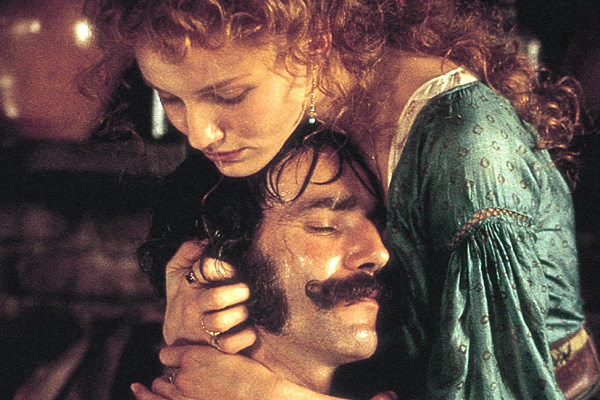
There’s a lot to be said about the rough Irish accents in this film, with the rest of the performers unable to hold a candle to Daniel Day Lewis’ ferocious, threatening performance as Bill ‘The Butcher’. Set in mid-1800s Manhattan, the movie kicks off in earnest when Amsterdam Vallon (Leonardo DiCaprio), an Irish Catholic immigrant, is released from prison and sets immediately to plotting revenge for his father’s murder years earlier at the hands of Bill the Butcher.
Martin Scorsese’s ambition and scope with Gangs of New York paid off handsomely with high acclaim and generally, overwhelmingly positive reception and more than a few Academy nominations. Daniel Day Lewis is immediately formidable, a bar raised so high none of his co-stars can hope to pass it. Leonardo DiCaprio, no slouch himself, stumbles through his Irish accent and at least distracts with the conviction of his performance.
Cameron Diaz is disadvantaged immediately by having the weakest accent by far, paired with the weakest character development. She can’t seem to decide what kind of movie she’s in, her character’s sense of displacement among the rest of the cast coming from a lack of any clear reason why she is there. She wears her character of Jenny Everdeane like an oversized coat, unable to muster much acting ability when she’s so focussed on pronunciation. Her performance feels clumsy and out of place – with DiCaprio and Lewis each furiously clawing through the movie, she wilts in comparison.
The fault with Jenny Everdeane being shoehorned into the plot (with gratuitously heaving bosoms) lies with Scorsese, but Diaz seems reluctant to do anything that might elevate her character with any depth. DiCaprio and Diaz have had their accents excused by Scorsese saying he wanted to represent a ‘transitional generation between immigrants and Americans’ – unfortunately, it ends up sounding like an excuse, and Diaz suffers all the more for it.
8. Charlton Heston – Touch of Evil (1958)
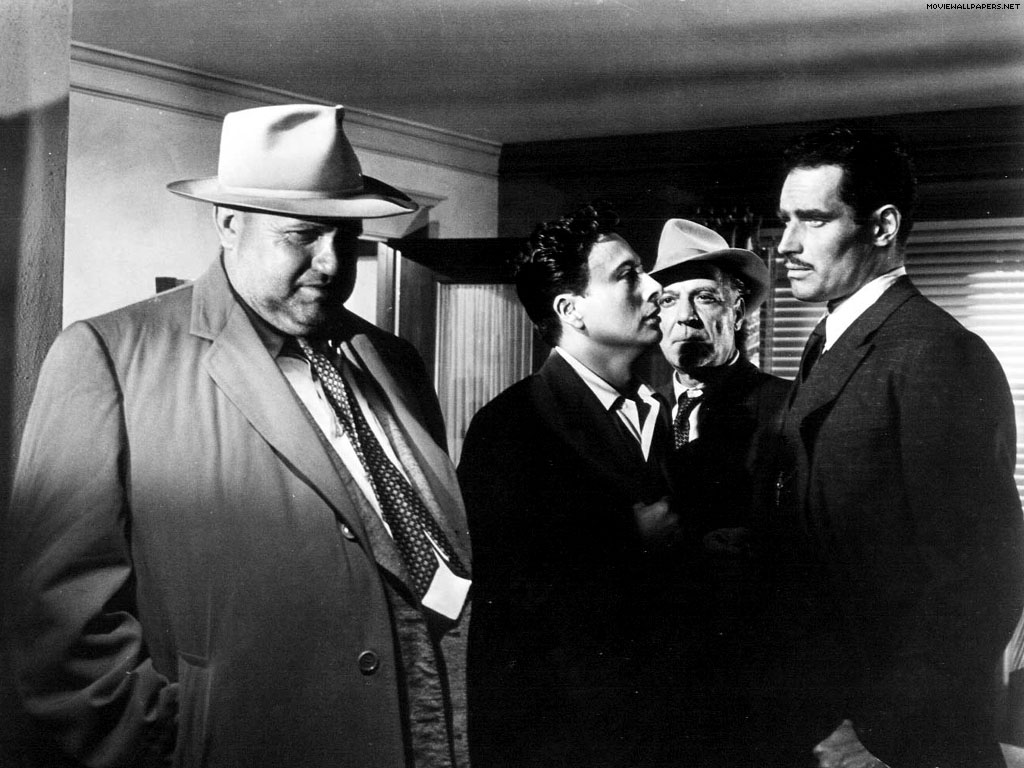
Nothing can ruin Touch of Evil as a whole. There exists multiple cuts and versions, the quintessential considered to be the edit following Orson Welles’ specifications. In any case, the film is considered a masterpiece.
Orson Welles, directing as well as performing as Quinlan, delivers Touch of Evil with intensity, behind and before the camera. Mercedes McCambridge’s cameo with one line – five words – is a scene of incredible menace. The film opens with one of the greatest tracking shots in American cinema. There’s just one small detail that sticks out. Just a little bit.
Charlton Heston is Detective Mike Vargas, a Mexican narcotics officer. To really sell this, he’s been lathered in tan makeup and his fine, blonde hair dyed black. He then spends time in several scenes around actual Mexican people, which definitely emphasises how flawlessly they pulled it off. Delivering his lines the same way he would eat sunflower seeds, spitting the words through clenched teeth, Vargas is painted as an idealistic cop in a corrupt town, but Heston plays him as a stodgy, clipped suit.
Charlton Heston was a great actor, and he is invested in this performance – just maybe not playing the role he thinks he is. He famously waited to sign on to the film until Universal Studios told him who the director would be, and suggested he’d be more willing to sign on if Welles was at the helm – he was cast for the star power of his name on the poster, and Universal was hungry to secure it.
It’s easy to be critical of historical cinema when viewed through a contemporary lens, and Heston isn’t alone culpable in the rampant racism and whitewashing at play in 1958. The context must be considered when looking at icons of the time, but Universal could have at least vaguely asked themselves if a blonde, fine-haired, blue eyed man was the best foundation to start with. It’s almost easier to forget that he’s intended to be Mexican.
9. Chris Tucker – The Fifth Element (1997)
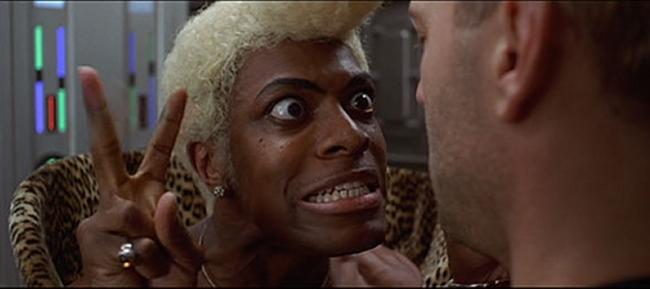
Considered now to be classic of 90’s sci-fi, The Fifth Element introduced the mass market to Milla Jovovich as Leeloo, the otherworldly supreme being, and created an intricate world awash with detail and lore. Gary Oldman is great as Zerg, the Southern space tycoon in league with a menacing, omnipotent evil seeking out a kind of ultimate weapon – the titular Fifth Element, Leeloo herself.
Bruce Willis plays Corbin Dallas, a disgraced ex cop and current taxi driver who finds himself flung into the middle of a galactic rescue mission. Backed by military resources, and about halfway through his hero’s journey with Leeloo, he boards a pleasure cruise destined for a resort where the mission will begin in earnest.
For some reason, Chris Tucker immediately appears without warning as Rhuby Rhodd – a DJ and galactic celebrity who then proceeds to scream directly into Willis’ face for the rest of the film. Tucker’s shrieking is what he’s known for, but it’s a massively unwelcome intrusion into The Fifth Element’s world.
The character is equivalent to Jar Jar Binks in a lot of ways – obnoxious and intended for younger markets, though Jar Jar at least had a hand in moving the plot forward. Maybe nobody could have salvaged the role that becomes a smear on the last half of a great film. Someone a little less shrill – a little less hysterical – would’ve gone a long, long way in bringing The Fifth Element that much closer to perfection, and less of a relic of its time.
10. Die Antwoord – Chappie (2015)
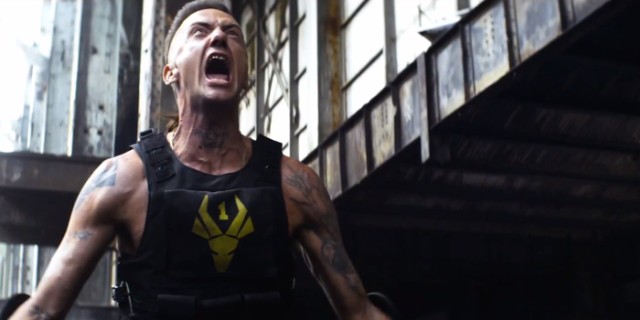
Chappie is another film where the execution betrays its own potential. One of the worst blows against itself being the decision to build an entire film around Yo-Landi Vi$$er and Ninja of Die Antwoord fame,(a South African hip hop duo, for those not in the know).
The real coup de grace is expecting audiences to take it seriously. Yo-Landi and Ninja aren’t actors, and the blame for their inclusion falls solely on Neill Bloomkamp. If his intent was to overshadow his own creation, then he succeeded.
Yo-Landi and Ninja play themselves, which unfortunately doesn’t hold together well when we’re exposed to them for longer than five minutes. There’s a chance that casting them as totally different characters, with related wardrobe and styling transformations, would have at least helped a little. But as mentioned – they aren’t actors. Seeing them startles viewers out of that necessary suspension of disbelief.
The duo is ubiquitous throughout the film, the novelty swiftly wearing off once realization sets in. This isn’t a cameo, they are here for the rest of the movie. Ninja wants to twist Chappie into his personal death-bot, showing what a bad boy he is by rolling up to the scene or squatting menacingly while listening to his own music. Yo-Landi is a sort of maternal figure to police robot Chappie, nurturing his gentleness.
Neither are particularly good in these roles, which is odd considering they’re playing themselves. Bloomkamp is evidently a fan, but what gets lost in that is his entire surrounding film. Somewhere underneath these poor decisions is a story that would have been worth exploring, and a script that deserved a lot more polish and a lot less Ninja.
The roles of Yo-Landi and Ninja play in the story could have been occupied by anyone else and the movie would have benefitted substantially and critically. After a certain point, they aren’t fun to watch anymore – Ninja’s performance is obnoxious and Yo-Landi is vacuous. Bad casting but also a bad decision in general on all fronts.